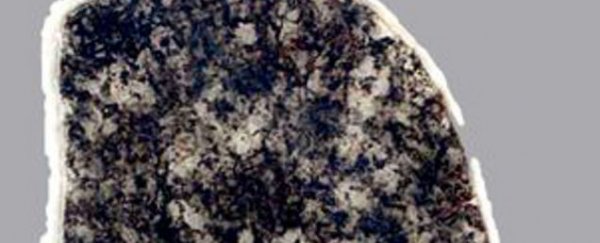Scientists have discovered a deep-sea microorganism that looks the same today as it did more than two billion years ago.
And when you realise that's nearly half the history of Earth, it's pretty damn impressive.
The microorganism in question is a tiny sulphur bacterium, which is too small to see with the naked eye. Scientists from the University of California, Los Angeles, recently discovered fossilised remains of the bacteria from 1.8 billion years ago, preserved in rocks from the coastal waters of Western Australia.
And, when they examined them, they found that, incredibly, these fossils looked exactly the same as previously discovered bacteria that lived in the same region 2.3 billion years ago.
Even more impressive was the fact that both of these samples were also physically indistinguishable from modern sulphur bacteria that lives in mud off the coast of Chile. The results have been published in the Proceedings for the National Academy of Sciences.
"It seems astounding that life has not evolved for more than 2 billion years — nearly half the history of the Earth," said earth and space scientist J. William Schopf, who led the project, in a press release.
But although this might seem like cause for doubt over Charles Darwin's theory that natural selection causes organisms to change over time, the discovery actually supports the theory.
"The rule of biology is not to evolve unless the physical or biological environment changes, which is consistent with Darwin," said Schopf, in the release. And the environment that these microorganisms live in hasn't changed for 3 billion years - so it's had no need to update itself.
"These microorganisms are well-adapted to their simple, very stable physical and biological environment," explained Schopf. "If they were in an environment that did not change but they nevertheless evolved, that would have shown that our understanding of Darwinian evolution was seriously flawed."
The fossils that were studied date back to the Great Oxidation Event, between 2.2 and 2.4 billion years ago, which is when Earth's oxygen levels rose sharply and an increase in sulphate and nitrate were produced.
 UCLA Center for the Study of Evolution and the Origin of Life
UCLA Center for the Study of Evolution and the Origin of Life
But although techniques such as spectroscopy and laser scanning microscopy have confirmed that the bacteria hasn't visibly changed since then, the team was unable to analyse DNA from the fossilised microorganisms due to their age. This means they can't compare the modern and 1.8 billion-year-old genomes to assess changes that have happened "beneath the hood".
The authors explain that there would have very likely been some neutral evolution - genetic changes that don't result in visible alterations - over the past two billion years, but these don't seem to have results in any adaptations.
As the team conclude in the paper:
Although the apparent 2-billion-year-long stasis of such sulphur-cycling ecosystems is consistent with the null hypothesis required of Darwinian evolution - if there is no change in the physical-biological environment of a well-adapted ecosystem, its biotic components should similarly remain unchanged - additional evidence will be needed to establish this aspect of evolutionary theory.
It's kind of nice to think that in a world where we're all constantly struggling to keep up, some things have the luxury of staying the same.
